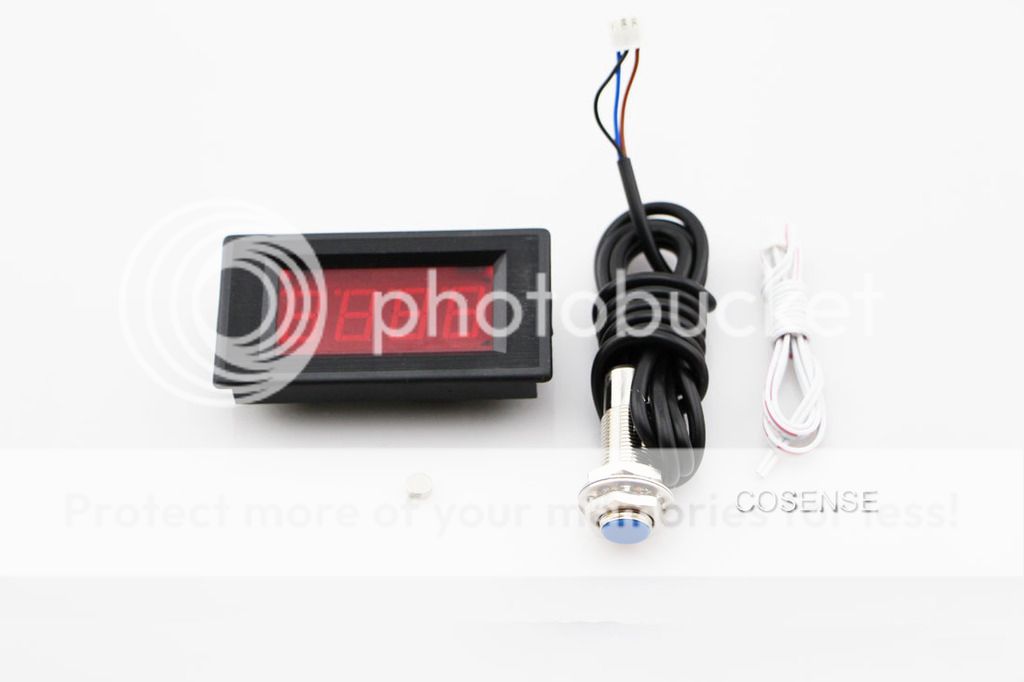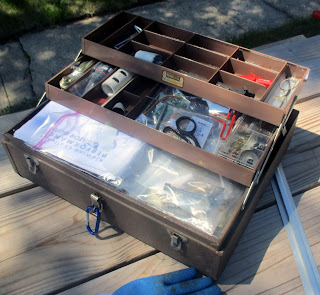Currently I am trying to figure out the refresh rate and the mode (such as Avg, or Peek) that the WS‐2813U‐IT La Crossei is set to, it seems to refresh every 15 - 30 seconds or so.
My analog volt meter is nice because is does the "averaging" for you with its slow and steady movements. (mounted in my old IPhone 3 box, saved for some such purpose)
So for a start I decided to assume that the La Crosse was averaging between refresh and so I would mentally average the volts thru that time.
This image shows 6.2 MPH and 16 VDC

The data as collected (with about 50 data points) is Wind Speed x Volts
FYI, I'm going to say that start up speed is about 4 MPH

I crunched the numbers and came up with a TSR of around 5.25, not bad.
Next step is to get a full length jumper cable to bring the Tach on shore and then to call La Crosse and see if I can get a tech to tell me the w/speed mode.
______________________________________________________________________________
07.11.16
Success today!
Yesterday not so much, the couple between the generator and the main shaft cracked as soon as I applied the dummy load. I discovered that I nicked the spring like milling when I drilled it out to receive the main shaft and a week of spinning got it all ready to snap as soon as I applied the load.
This is very good because it shows the weak spots in the design and all of the winter fixes whould be major improvements.
I replaced the couple and all is well for now, I do not expect the new couple to last much longer... we shall see.
With the ammeter spliced in to the system and my dummy load box set to 10 ohms I got a really nice correlation between vdc and amperage, unfortunately the tach is acting very flaky and so now that is harder to get a good number than it should be.

This chart starts to confirm actual output.
07.11.16_________________________________________________________
The new couple lasted about a day but I got some more data from it before it broke.
With new couples and a redesigned main-shaft I will try again in a month.
I have ordered a wired anemometer so that part of the puzzle will be addressed.
I am already planning how to install a bigger stepper generator, I feel that this one will not get me to the 16vdc often enough.

This chart indicates that it should take 12mph to get to 16vdc but I know this data is vague, might be more like 16mph.
I am missing a beautiful 16 - 18 mph day due to the drive train failures so I hope we get some wind in August.
07.17.16______________________________________________________________________
Repaired in one 3 hour session in the shop back at home.
The old couple was hand made (not by me) and both cracked.
Ordered two new ones and installed one with some significant detailed changes to limit the stress on the couple itself.
























